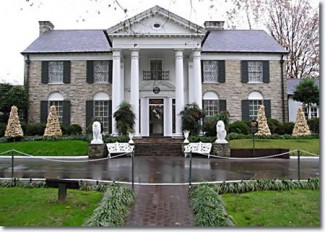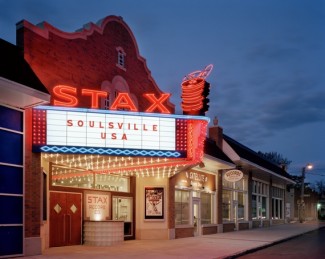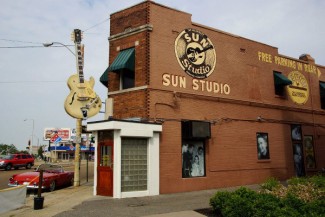
By Justin Boldenow, Producer of The Solari Report
“An attempt to persuade people or warn people about something they might be missing out on.” – Peter Guralnick on his writing.
In March Catherine reviewed an interesting Documentary that led us to making the Louisville Kentucky Mayor, Charles Farnesly, our Hero of the Week. The reason we did this is because Charles understood something that Memphis learned way too late. He had known that music truly does make a city.
This May, two members of the Solari team underwent a pilgrimage to understand one of the most understated cultural movements in American history: the dawn of Memphis music.
This exploration first began when we realized that Peter Guralnick had agreed to be a guest on this week’s report. The opportunity to tie in our monthly music reviews with the fantastic content that was sure to result from this interview was too great to miss.
We weren’t seeking the birthplace of Rock and Roll or Blues as the novelty of this idea was beyond our scope, and which proved too restricting for what Memphis had in store. We didn’t go there with any clear goal in mind other than to obtain something worth writing about. We knew it would be there once we got there but we just didn’t know what it was. What we came away with was a revelation of the network and influence that impacted the rest of music around the world.
We first toured the legendary Graceland, home of Elvis Presley. I’m proud to say that though we acknowledged the excess of Elvis’ fortune, what we truly witnessed was the connection to home that Elvis had. Elvis certainly enjoyed the spoils of fame but beyond that he enjoyed the care and company of friends and family. Every facet of his life and estate seemed suited to the purpose of caring for and entertaining those he cared about. Even now, those that visit may enter with a desire to gawk or gaze, but leave feeling connected and part of something. I believe that this is truly the Presley legacy. Once you walked through the doors of that house, you felt like family.
After Graceland, we visited the legendary Stax Museum of American Soul Music. It was here that we learned the origin of Stax. It started as a way to serve the musicians first, a way for musicians to play with friends and make recordings for family and the community. What it grew into is a movement that revolutionized music since. With the culmination of rock, jazz, blues, and soul, Stax did it in a way that didn’t exist elsewhere. Peter has compared Motown as producing artists on an assembly line, while Stax was pure, raw, and eclectic passion. It swelled and grew beyond the divisions of race and status. Unfortunately, it stopped growing and fell apart in a few bad business decisions.
Our next stop was the Rock’N’Soul museum off of Beale St. next to the FedEx Forum. A partner with the Smithsonian Institution; this museum has an extensive and entertaining collection. In a timeline that spans from the first decade of the 20th century to today, the life of Memphis music is well documented and has a way of coming to life before your eyes. The interrelations of each critical member of the Memphis scene are carefully examined and displayed point by point. It is a well-archived museum with a vast library of exhibits. This is true treasure.
Our final stop took us to 706 Union, or otherwise known as Sun Studio. It’s here that Sam Philips discovered Elvis Presley, where Johnny Cash rang out his famous melodies and where Howling Wolf made his mark. That first recording of distorted guitar on Jackie Brenston’s Rocket 88 happened there and where a picture of the Million Dollar Quartet made up of Elvis Presley, Johnny Cash, Jerry Lee Lewis, and Carl Perkins hangs above the instruments. This is Memphis music. It was country, rock, jazz, blues, funk, soul; it was 1950’s through 1970’s America inside one city ordinance and sometimes under one roof.
Since our journey, we’ve taken up copies of Peter Guralnick’s Last Train to Memphis and have been able to take everything from our trip to Memphis and put it under a microscope. Sam Phillips made it his life’s purpose to discover and promote under-appreciated talent through Sun Studio and gave it to Dewey Phillips who’s purpose was to play under-appreciated talent over the airwaves on WHBQ. Down the street Elvis sat at a diner near Beale where B.B. King would play blocks away and also DJ’d over WDIA. WDIA also housed Nat Williams, a local high school teacher and Rufus Thomas who would go on to be one of the largest performers under Stax Records.
There was a culture, an ecology, and a system of friendships that made Memphis music. Unfortunately Memphis didn’t see it, or they refused to acknowledge it and now, even though the music rocked the world, few remember that it came out of Memphis. Memphis is a beautiful place and the heritage can still fill the streets with an excitement that can’t be measured. Whether on line or in the streets of Memphis, if you revisit the heritage, you feel it.
Related Reading:
Music, Writing and the Creative Process with Peter Guralnick




